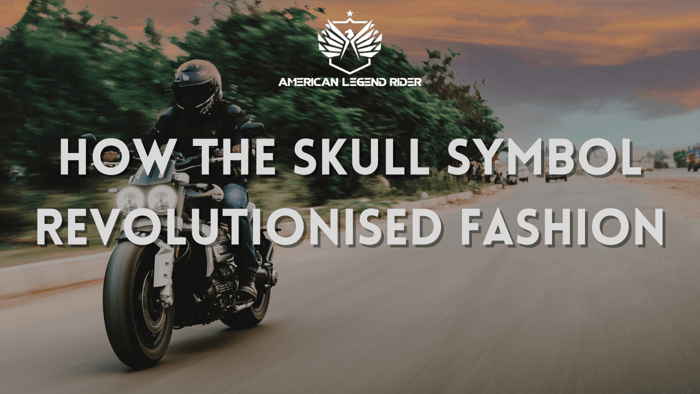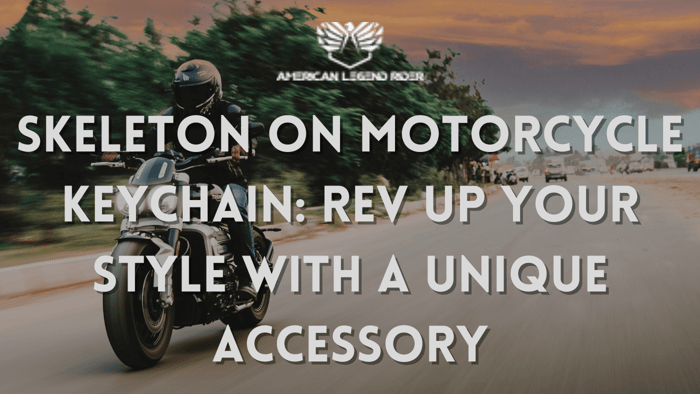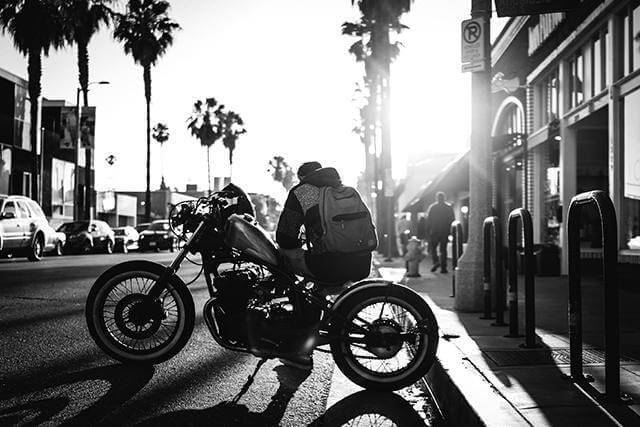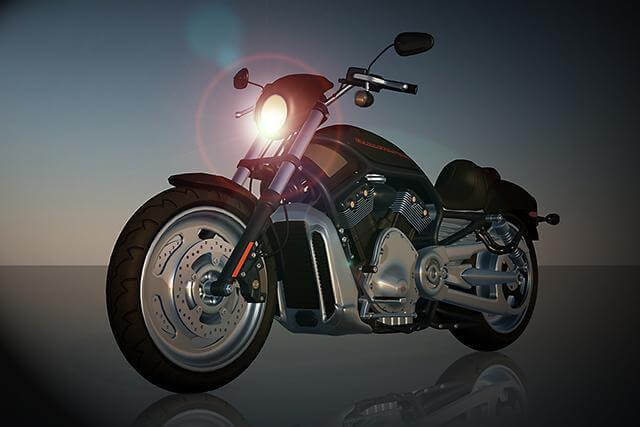Previously associated with the dark and morbid world, skulls are now redefining the fashion industry...
Once considered as legends of forbidden territory, sinister symbols, they are now prominently used as fashion statements. From fashionable children’s shirts to skull helmets, boots, leggings, bracelets, earrings, and hoodies, skulls are everywhere.
If you have an eye for fashion, you will notice something that has remained unchanged for ages: the remarkable emblem of a skull. It is easily recognizable, regardless of the prevailing fashion trends.
The fashion industry is constantly evolving, with new tastes emerging and disappearing in no time. However, the skull symbol stands out as evergreen and highly regarded. It remains the most consistent image in fashion, enduring the fleeting trends that come and go.
I like to believe that the enduring fascination with skulls is what gives it staying power. There must be something special about skull symbolism beyond its association with death, mortality, and the afterlife. To truly grasp its significance, we need to delve into its historical roots.
History and symbolism of the skull
The enduring image of a skull has been around for centuries dotting many cultures around the world. It is quite unclear as to how the human skull broke the mold into the mainstream fashion industry. But many believe that the biker gang subculture was the first to bring it into the public domain.
The skull motif became ubiquitous among bikers and they just couldn’t have enough of it. They engraved the skull emblem in all fashion assortments including jackets, t-shirts, rings, helmets and even more prominently on their bikes. They even had a skull tattoo on them.
Today, bikers adorn themselves and their bikes with skull stickers, skull seat covers, skull patches, skull jewelry, and other skull accessories in a show of uniqueness and an undying commitment to motorcycling. It also shows their loyalty to the club and brotherhood. A motorcycle rider pledges to carry on the legacy and pride until death.
Too cool for school, the skull was adopted by Hollywood which further solidified its use in fashion. Today, the symbol is everywhere. Celebrities wear skull clothes including skull hoodies skull backpack and other skull fashion items on the grandest of stages.
But where did it all begin? The earliest known use of the skull symbol dates back to the 16th century. The German Renaissance artist, Albrecht Dürer, was one of the first artists to remind people of their mortality by using skulls in his paintings and woodcut prints. His work, which included engravings, portraits, and altarpieces featured skull symbolism. Some of his famous works such as the Knight, Death and Devil master print featured a skull symbol engraving.
Many people steer away from embracing the skull due to its association with darkness, danger, and mortality, but that’s only the surface of a rooted symbolism. Skulls have been employed in many ancient cultures to convey unique messages and symbolize ulterior meanings.

Art and culture
The deathly association of the skull symbol did not begin now. From as early as the 16th century, literary geniuses like Shakespeare used the skull to represent death. A classic example is when Yorick’s skull, in the play Hamlet, is used to evoke the question of life and death. It helps the main character to reflect and ponder on the unifying experience of death and emphasize that all humans must go through it.
For a long time, the use of the skull motif was accompanied by ‘Memento Mori’; a statement in Latin that translated to ‘Remember That You Will Die’. The mantra was used during Medieval Latin Christian to reflect on mortality as well as emphasize the transient nature of life and worldly things.
Even more gruesomely, the skull of dead enemies was used as a drinking vessel in ancient rituals in England.
In more recent days, human skulls have been used to depict a dystopian society taken over by aliens, machines or robots. The movie ‘The Terminator’ egregiously shows a pile of human skulls after machines overcome humans. The extensive use of the symbolism is also depicted in big franchise movies such as Nicolas Cage’s ‘Ghost Rider’ sequel. Notably, his bike is adorned with skull symbols and cool skull designs that resemble the human exoskeleton.
Skulls have come a long way to represent bravery and a relentless fighting spirit as used in military uniforms, ranging from United States special operations units to other military gears.
The Jolly Roger flag is a symbol synonymous with pirates and traces its history back to 1710s. It consists of a skull with crossbones and was among the first symbols used to strike fear by pirate captains. The famous French pirate, Emmanuel Wynn employed the skull and crossbones in his ship. The pervasive use of the skull in fashion is quite often associated with the widely popular Pirates of the Caribbean sequel featuring Johnny Depp
While many people will be quick to associate skull symbolism with the dingy world, in some cultures, the skull is a symbol representing the afterlife and mortality. For example, a skull with wings symbolizes a spiritual experience of freedom and transcendence. It also reminds people that the afterlife awaits their soul.
For centuries now, the Christian religion has maintained the skull symbol as a reminder to mortals of their afterlife and heavenly paradise that awaits them. Christian Saints are often pictured with crucifix and skulls.
The lurking danger
The grim origins and blatant association with the underworld, has made skulls to be a top sign for danger. In contemporary usage, the skull is often the go-to symbol when warning others of the potential danger that could meet them. For example, poisonous items have a skull and crossbones symbol to indicate death and lethal consequences. Pirates use the symbol in their flags to warn others of impending danger should they decide to lock horns with them or refuse to yield to their demands.
Charms, and reversal of misfortunes
Contrary to popular association with bad luck and misfortune, skull symbolism has been associated with luck in many cultures. It’s been referenced in ancient works of paints, writing, engravings and other media discovered by anthropologists.
Many cultures like the ancient Aztecs, were known to use the skull symbol for good luck. Further, they engraved skull motifs in stone sculptures, wove it into garments, mold on pots and formalized into hieroglyphs.
Even in a more contemporary application, gamblers use the symbol of a skull with the roll of a dice, coupled with number sevens and black cats. This arguably dark depiction is believed to reverse bad luck, and if the gambler had a bad streak, they are eventually going to hit a winning spree on the table.
The Celts used skulls to represent the throne of power and revered it as the house of the soul. Other primitive and ancient cultures used skulls to celebrate the memory of their dead kin and as a good luck charm that would ward off misfortune, evil, illness and other catastrophes. Besides ensuring well-being and protection, ancient cultures wore skull ornaments as a sense of fashion, which was pretty cool at the time as it is today.

Heavy Metal Music
Popular subcultures have for a long time used skull fashion and symbolism to represent nonconformity, rebelliousness, free-thinking, toughness, and bravery in the face of danger and death. A classic example is the pervasive use of skull motifs in heavy metal music, and more recently in Grunge music from the 1980s.
The vivid skull imagery used in heavy metal as a genre evokes a sense of freedom and seditiousness which legions of fans can relate too. Furthermore, heavy metal mascots have played a major role in the music genre, including some of the widely popular mascots from popular bands. For example, Chaly, from Overkill, is a monstrous mascot featuring bat wings on a flying human skull. Does that sound badass enough? The mascot is surely a harbinger of fate with its eye-popping skull fashion integration. Other heavy metal mascots that utilize the skull symbolism include Vic from Megadeath and the scary Iron Maiden’s Eddie.
Haute Couture
Haute Couture is a high-end fashion category that involves the creation of custom-fitted apparel that is entirely hand-made. Usually, the clothes are created by leading fashion houses to cater for luxurious clientele. In what is regarded as a stroke of genius, British fashion designer, Alexander McQueen introduced the skull into this fashion category. He personified a rebellious style that added to the popularity of the skull symbol even more. Many of his creations that followed included the skull symbol in a prominent way that it was so easy to notice.
The engulfing popularity of his design became imperious in the fashion industry and his trademark skull in Haute Couture became a lasting legacy. Today, the Skull-print scarf which Alexander McQueen pioneered is a piece of hot cake in the fashion accessories category. Other fashion designers have embodied the steps of McQueen, such as Ed Hardy, Lucien Pellat-Finet who have incorporated the human skill motifs in their creations.
What does the skull mean in motorcycling?
The deep appeal with skulls finds perfect expression among bikers across the world. From the vintage Harleys with skull-shaped handles to skull helmets, skull rings, skull boots, hoodies, and bracelets, skull leggings you will find the skull symbol ubiquitous and enduring. But what does it mean to motorcycle riders? Does it represent death? Obviously, for those who are unfamiliar with the biking subculture, the skull symbol may seem incongruent and actually opposite of what it’s supposed to mean. But the reality is far from that. Unlike the symbolism used in popular culture, skulls in motorcycling serve many purposes of which include:
- Commitment till death-bikers are passionate about their lifestyle and choices and the skull is the perfect emblem that represents their dedication towards motorcycling and helping others in their club.
- As a symbol of identity- the contemporary use of skull symbolism is almost synonymous with bikers. Even motorcycle manufacturers’ logos such as Harley-Davidson have logo variations that use the skull symbol. Also, the skull symbol helps to identify fellow bikers and drive away people who do not identify with the biker group.
- A visual stamp of fate-the skull symbol is a constant reminder of our mortality and that death rides with everyone at any time no matter how safe you drive.
- Continuity even after death - the skull is often considered as a symbol of mortality, but it can also represent continuity even after death. Consider this: once there is death, the flesh wanes into the earth and what remains is skull and bones. The human skull remains unchanged and is instantly recognizable no matter how much time passes by. For motorcycle riders, the skull is a timely reminder that they can enjoy the moment, have fun with the hope that the Brotherhood will continue long after they are gone.

What is the future of the Skull in fashion?
The universal appeal of the skull symbol is showing no signs of decline. The use of skull motifs in fashion will continue to dominate and break new boundaries. The historical value, symbolic meanings, references, and diversity add to the rich tapestry of this ancient and enduring symbol. The skull is not only a representation of art but also a record of our past history.
Today, the dingy associations are beginning to fall apart and many people are embracing the symbol in their daily lives. Whether you want to look cool or embody your nonconformity, the skull emblem is a perfect way to express your feelings, thoughts, and aspirations.
Perhaps, the skull visage will one day be used in currency notes? Am sure it’s not so hard to imagine that possibility.
Mainstream celebrities are donning skull clothes, skull earrings and rocking it wherever they go. Big franchise movies such as Pirates of the Caribbean have made headway in spreading the use of skulls. If Johnny Depp is one of your favorite movie actors, I am sure you will have no issue with donning a skull t-shirt, or headgear.
